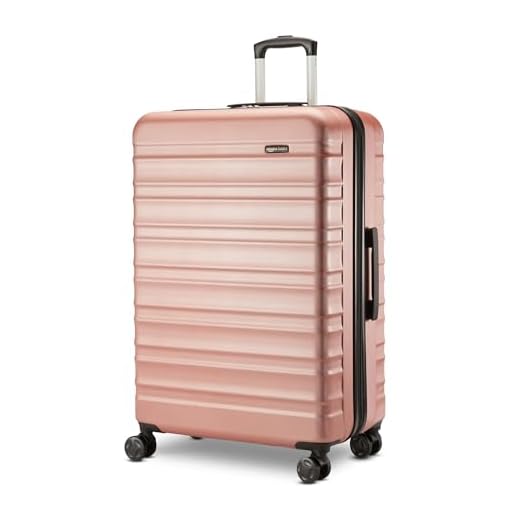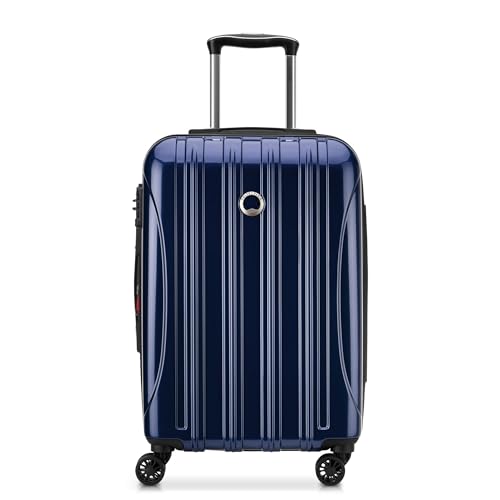For travelers seeking durable and lightweight options, models crafted from polycarbonate or aluminum are highly recommended. Polycarbonate offers resilience to impacts while remaining incredibly light, making it a popular choice for frequent flyers. Aluminum, on the other hand, exudes luxury and provides unmatched protection against physical damage.
Another noteworthy contender in the market is ballistic nylon, celebrated for its strength and water resistance. This fabric ensures that personal belongings remain secure, even in unpredictable weather conditions. Additionally, soft-shell variants often integrate various kinds of polyester, combining flexibility with a reduced weight, ideal for those who prefer a more casual approach to packing.
When evaluating various choices, consider features such as zip quality and interior organization systems, as these factors can significantly enhance user experience. Moreover, examining environmental impact and sustainability practices associated with the materials used may also influence purchasing decisions.
Durability and Construction of Away’s Travel Gear
The products from this brand primarily utilize polycarbonate for hard-sided suitcases, providing a robust shell that can withstand impact during travel. This material balances lightness with strength, ensuring easy handling while protecting contents. For checked options, look for the use of high-density nylon, known for its resistance to tearing and abrasion, which enhances longevity.
Interior Materials
Inside, the compartments often feature a blend of polyester and nylon lining, offering durability while reducing weight. This choice also makes for easy cleaning, a practical aspect for users who frequently travel. Pocket placements and dividers crafted from these textiles facilitate organization, allowing for efficient packing without compromising on the security of belongings.
Environmental Considerations
In terms of sustainability, some collections incorporate recycled materials, reflecting a commitment to reducing environmental impact. This means customers can make an eco-friendly choice without sacrificing style or utility, as these options are both fashionable and functional.
Durability: Comparing Polycarbonate and Aluminum
For travelers prioritizing resilience, polycarbonate and aluminum offer distinct advantages. Polycarbonate suitcases are lightweight yet robust, providing high impact resistance. In contrast, aluminum cases deliver exceptional strength and a premium feel, but come with added weight.
| Feature | Polycarbonate | Aluminum |
|---|---|---|
| Weight | Lightweight | Heavier |
| Impact Resistance | High | Very High |
| Scratch Resistance | Moderate with surface treatments | High |
| Flexibility | Some flexibility reduces cracking | Rigid, less forgiving |
| Cost | Generally more affordable | Typically more expensive |
The choice largely depends on travel habits. For frequent flyers or those navigating rough terrain, the robust nature of aluminum may be preferable. Alternatively, travelers seeking portability and a lower price point might opt for polycarbonate options. Assess how each option meets your specific requirements before making a decision.
Weight Considerations: Choosing Lightweight Fabrics
Select lightweight fabrics to minimize the burden while maximizing functionality. Common choices include nylon and polyester, known for their strength-to-weight ratio. Nylon weights around 1.1 to 2.2 ounces per square yard, offering flexibility and durability, perfect for frequent travelers.
Nylon Features
This synthetic fiber is highly resistant to abrasion and tears. When looking for a travel item, consider options with ripstop nylon, which features a reinforcing technique that adds to its strength without significant weight increase. Additionally, fabrics with a water-repellent coating enhance protection against moisture.
Polyester Benefits
Polyester generally weighs slightly more than nylon but excels in retaining shape and color. Fabrics like 900D polyester provide excellent resistance to wear and do not sag under heavy loads. Look for lightweight polyester blends, offering a balance of sturdiness and reduced weight, ideal for frequent excursions.
Choose zippers and clasps made from lightweight metals or durable plastics to maintain overall portability. Prioritize features that reduce bulk without compromising organization, ensuring that every ounce counts when packing.
Water Resistance: Evaluating Different Luggage Materials
Selecting suitcase options with high water resistance is critical, especially for travelers facing varying climates. Polycarbonate and ballistic nylon stand out for their moisture-repellent qualities. Polycarbonate is often treated with coatings that augment its ability to repel water, ensuring contents stay dry during unexpected rainstorms. This thermoplastic material maintains an impressive balance between weight and durability.
On the other hand, ballistic nylon is woven tightly, which naturally prevents water from seeping through. Some manufacturers enhance this feature by applying a waterproof layer, making it suitable for wet conditions. When evaluating choices, consider if the zipper and stitching also provide water resistance, as these areas are common weak spots.
For outdoor adventures, opting for bags crafted from coated or treated fabrics is wise. They can endure harsher elements while protecting your belongings. Ensure to check user reviews focused on this feature, as real-world experiences provide insight better than specifications alone. A useful secondary resource for maintaining the integrity of your gear includes tools such as the best car detail pressure washer, which helps keep your luggage clean and functional.
Environmental Impact: Sustainable Choices in Travel Gear Design
Opt for eco-friendly options like recycled PET, organic cotton, and biodegradable materials, effectively reducing ecological footprints in the manufacturing of travel cases.
Recycled Components
- Recycled PET is derived from plastic bottles, conserving resources and diminishing waste.
- Using post-consumer materials encourages circular economy practices, benefiting the environment.
Biodegradable Fabrics
- Natural substances such as hemp and organic cotton decompose more readily, minimizing landfill burden.
- These fabrics often require fewer chemicals to grow, further alleviating environmental impact.
Supporting brands that prioritize sustainability contributes to a healthier planet. Seek out eco-conscious manufacturing processes and certifications to ensure responsible sourcing. For travelers facing inclement weather, consider the best umbrella for storms to supplement your eco-friendly travel gear.
Repair and Maintenance: Longevity of Different Materials
For optimal lifespan, consider routine checks and treatments tailored to specific constructions. For instance, synthetic coverings often require spot cleaning with mild detergents to maintain appearance and integrity, while polycarbonate shells benefit from regular polishing to mitigate scratches and enhance durability.
Aluminum exteriors demand careful handling to avoid dents, along with occasional polishing to prevent oxidation; applying a protective coating can help maintain its sheen over time. Additionally, zippers should be inspected routinely; lubricating them can prevent snagging and prolong functionality.
Handles and wheels, integral to maneuverability, are prone to wear. Regular inspection for loose screws or signs of strain, followed by timely replacements or repairs, can significantly extend the overall life of your travel gear. Keep all components clean and free from debris for uniform performance.
Using protective coverings during storage minimizes exposure to harsh conditions, preserving both appearance and structural integrity. Follow manufacturer recommendations for maintenance, as specific care routines can vary widely between different types of construction.







